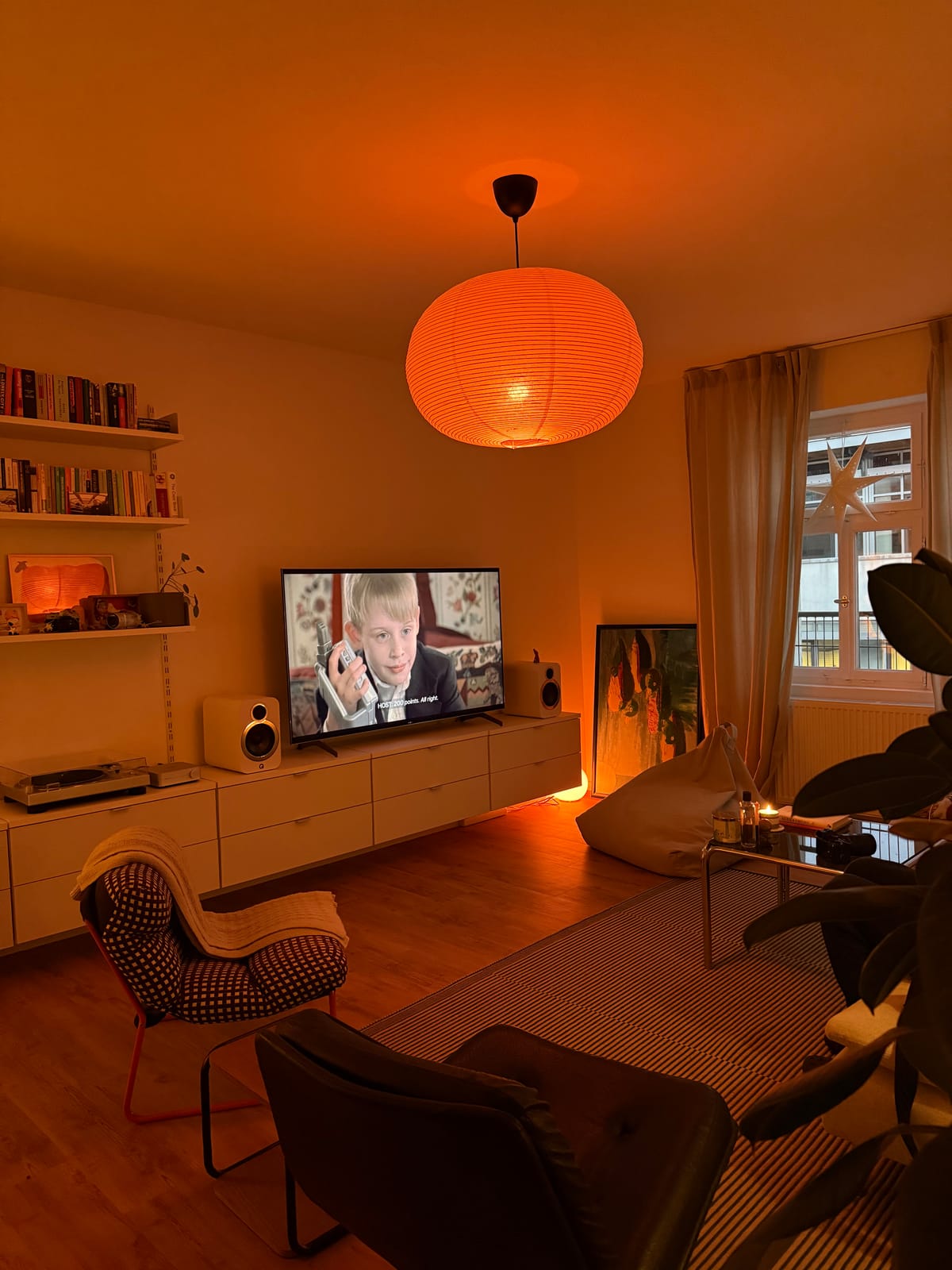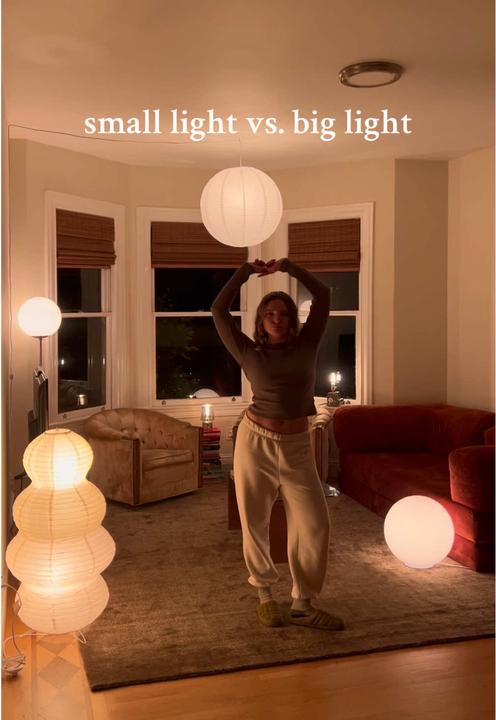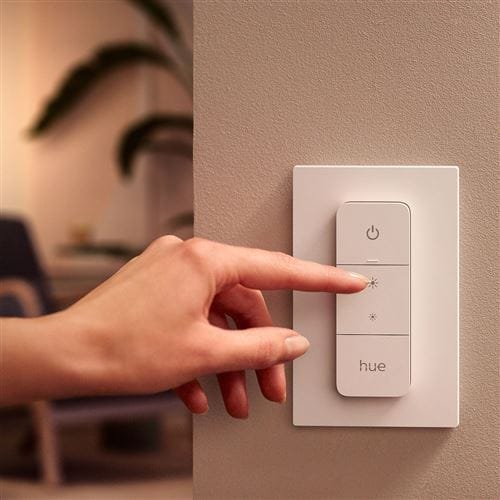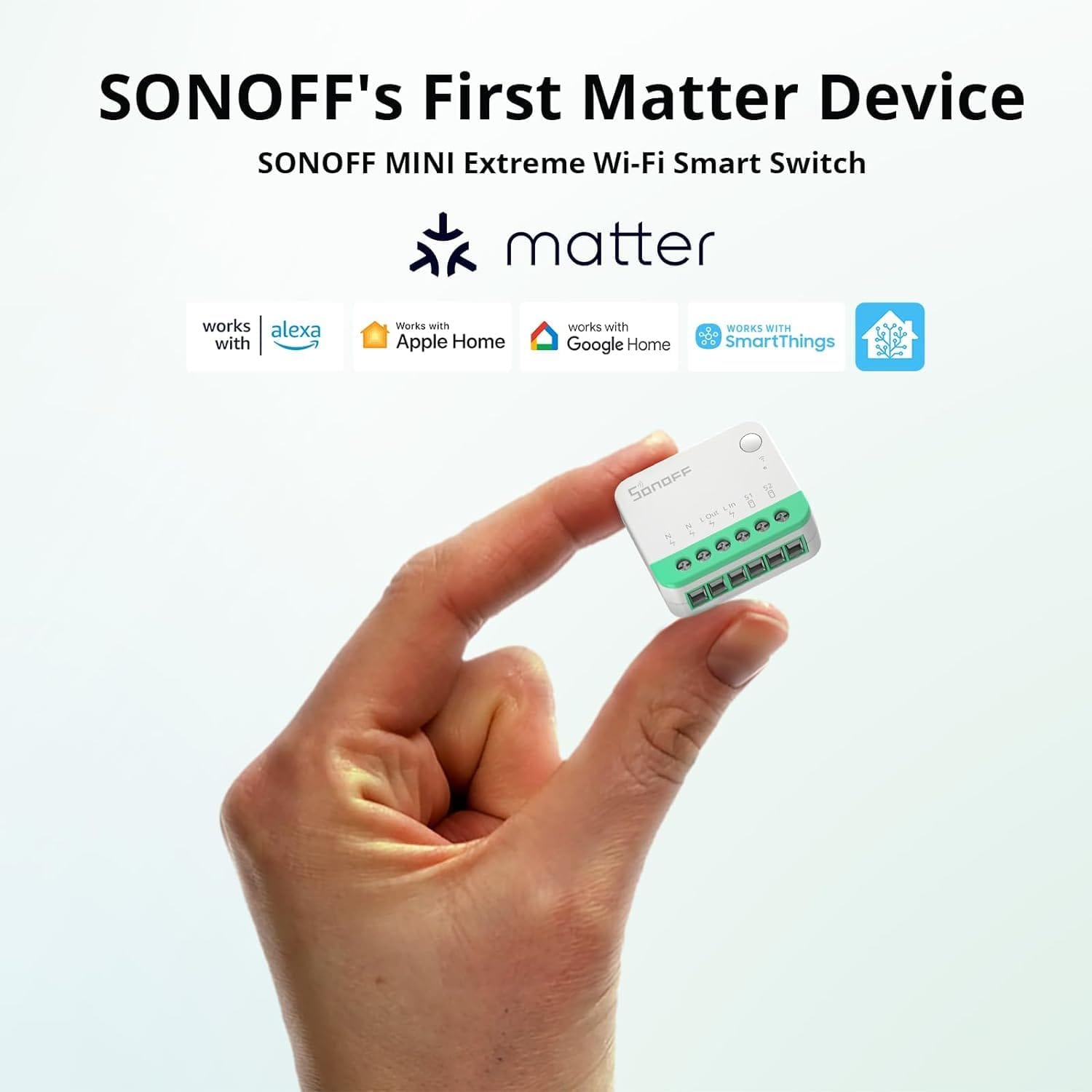The state of our smart home lighting and future plans

Living in an old apartment and trying to smartify it is hard. Trying to do it on a budget and hence purchasing items from various different brands makes it even harder. Matter was/is promising but availability is still an issue and as always not the solution to every problem that exists. This is a post about the current state of our smart home lighting and what are we planning to improve it.
How it started:
When we moved in together with my girlfriend, we made the decision to only include smart bulbs in our home. Since we didn't have any built in lighting on the ceiling or walls it wasn't that hard to achieve.
We are long time believers of atmospheric lighting, meaning we try to avoid using one overpowering light and try to use multiple scattered light sources in each room. Five dim light sources is way better than one or two strong light sources. This has since become some sort of a trend online with many TikTok/Instagram videos on the matter. They (the internet) decided to call this big light vs small light. I am glad this is becoming more popular because after getting used to our lighting at home, I get sort of a headache whenever I am in a room with a single ceiling lighting.

Multiple smart bulbs per room is great but you do need a way of controlling them. Launching an app on your smartphone for each adjustment is not ideal. We have voice control with Alexa but we quickly found some issues with voice control:
- Back and forth with a voice assistant isn't the best experience when you just want to turn on the lights
- Huge learning curve for guests
- It might be 2025 but it still feels awkward talking to a voice assistant when you are with guests that are not familiar
- Voice assistants are not reliable
- Voice assistant won't hear me when I am listening to music or worse, it will pause the music to hear me
- What if someone is napping when I want to turn on the lights?
Long story short, we needed to find a different way to control our lights. I looked around and almost everything in smart light control space is designed like tech items instead of interior design items that I expected them to be.
Yes, there are nicer models out there asking for incredible amounts of money with most of them very limited in terms of what they can do. With my uncle coming to visit, I couldn't be bothered with finding the ideal solution, so I opted for the easy and cheap solution, the Hue Smart Switch.

These are easy enough to use, very flexible to install and use since they are battery powered, renter friendly, they offer good functionality and great integration into Hue Light Ecosystem at a very afforable price. So we picked three of these for each room of our apartment.
How it's going:
We have been using the Hue switches for two years now and we are mostly satisfied with them except for frequent battery changes and some infrequent reliability issues. However even disregarding these issues, they still proven to be challenging during large gatherings where we don't explain how they work to each guest. I have seen quite a few cases where a party guest had to use the toilet with lights turned off. Not ideal.
We recently got an Apple TV 4K with Ethernet so we finally have a Matter supported smart home hub that can control all of our lights. So once I had to switch all three batteries in our hue smart switches, it was enough I thought. I had to find a matter supported switch that looks decent.
That is when I came across the Sonoff MINIR4M. It is a feature packed little smart switch module that connects to any old light switch and turns them into smart switches. The killer functionality for me is to be able to use it as a pure smart switch, meaning it only provides a wireless matter signal to our Apple TV Hub to turn on/off the selected lights and doesn't control the circuit powering them. This gives us back the satisfying physical control of our lights and completely removes the learning curve for guests.

It is not all positives, there is no way to adjust brightness or color of our lights with a physical switch this way. We have to do fine adjustments with our phone/voice control. I have automated the switch on Apple Home to set the lights to a specific setting but ideally I would definitely want more control on the physical switch.
With all that said, it remains very satisfying turning on and off 5 different light sources all around the room with a single mechanical click.
Future Plans
There are two ways we can continue on our smart home lighting journey.
The easy way is, we will focus on simplicity and keep adding matter modules behind the switches ensuring everyone get to use some basic turn on/off functionality. We will use our phones and voice assistants for finer adjustments.
The hard way is we find a way to control the brightness and warmth via a physical switch as well. Honestly, we are so bothered with the lack of decent looking smart switches that we are considering building a startup out of this. I think I am good for the software side of it and we will come up with the design together with my architect girlfriend. I guess we will have to find an electrical engineer along the way. I am pretty serious about this.
There is also the whole switching to home assistant to power everything consideration but that is for another post.